Best Garmin watch 2025
These are the best Garmin watches across the Venu, Forerunner, Instinct, Fenix, and other Garmin lineups, for every type of athlete.
When it comes to fitness-focused smartwatches, Garmin is one of the best brands around. Not only does Garmin have tons of premium features like Body Battery and Garmin Coach, its watches also work with both Android and iPhone.
Garmin, however, has tons of smartwatches separated into various lines that focus on different needs, from its Forerunner series for runners, for example, to its Fenix series for outdoor adventures and Vivoactive line for entry users. We have reviewed many Garmin smartwatches and find that consistently, they offer reliable heart rate and GPS data. Plus, many even last weeks per charge.
There are a lot of similarities among Garmin smartwatches, but there are key differences, too. From the primary focus and specific features baked in to the design and the budget, you'll want to make sure you're choosing the right one. The team here has collectively reviewed every model on this list to determine the best . Garmin watches to meet every need and price point.

Michael is Android Central's resident expert on fitness tech and wearables, having tested dozens of smartwatches from Garmin, Samsung, Google, Apple, Fitbit, Coros, Polar, Withings, Amazfit, and others. The Garmin Forerunner 965 is his current daily watch, and he's also reviewed most of the Garmin watches below.
At a glance
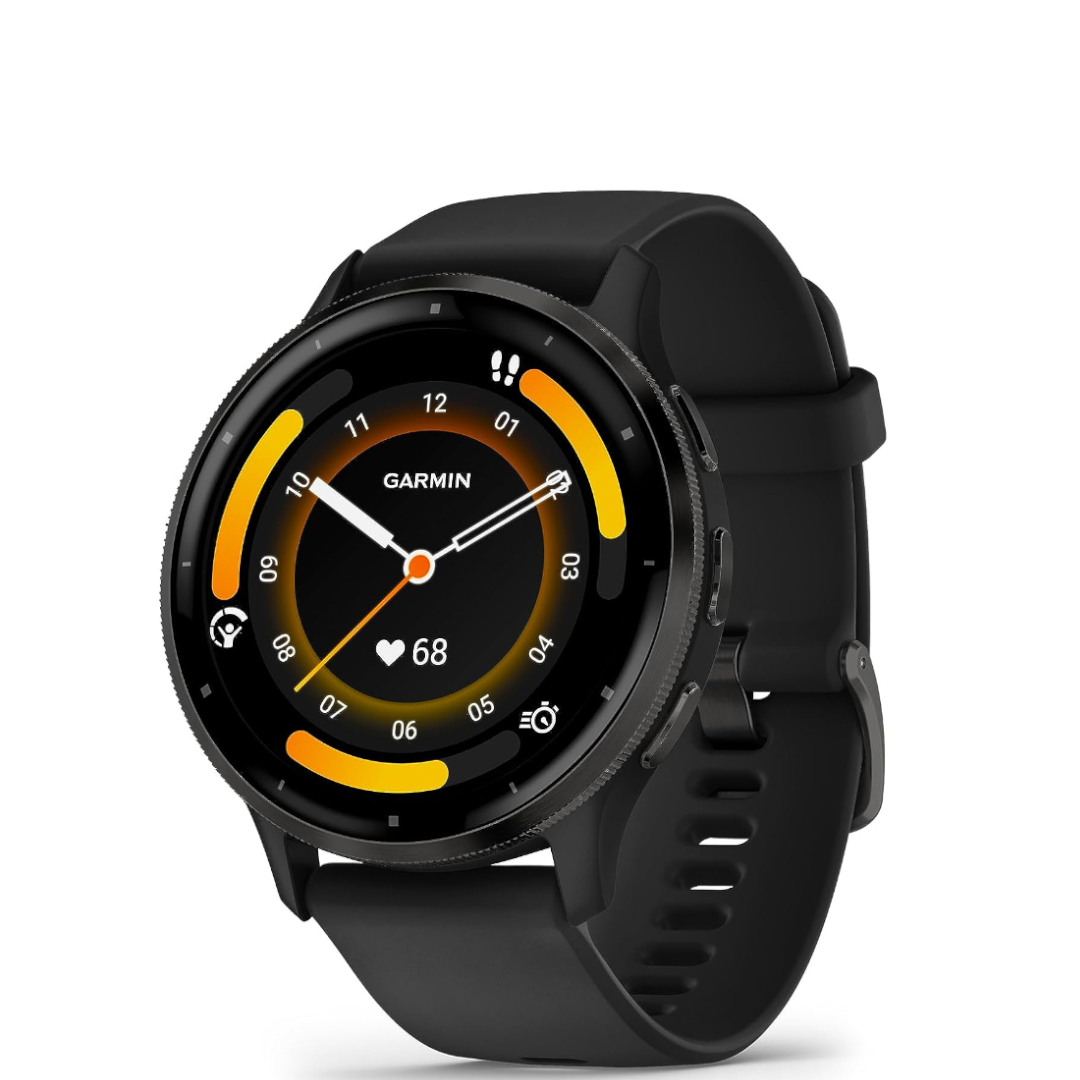
Best overall
Most Garmin watches aren't that "smart" compared to bigger brands. The Venu 3 closes the gap with a mic and speaker for calls and voice assistants, plus smarter notifications.
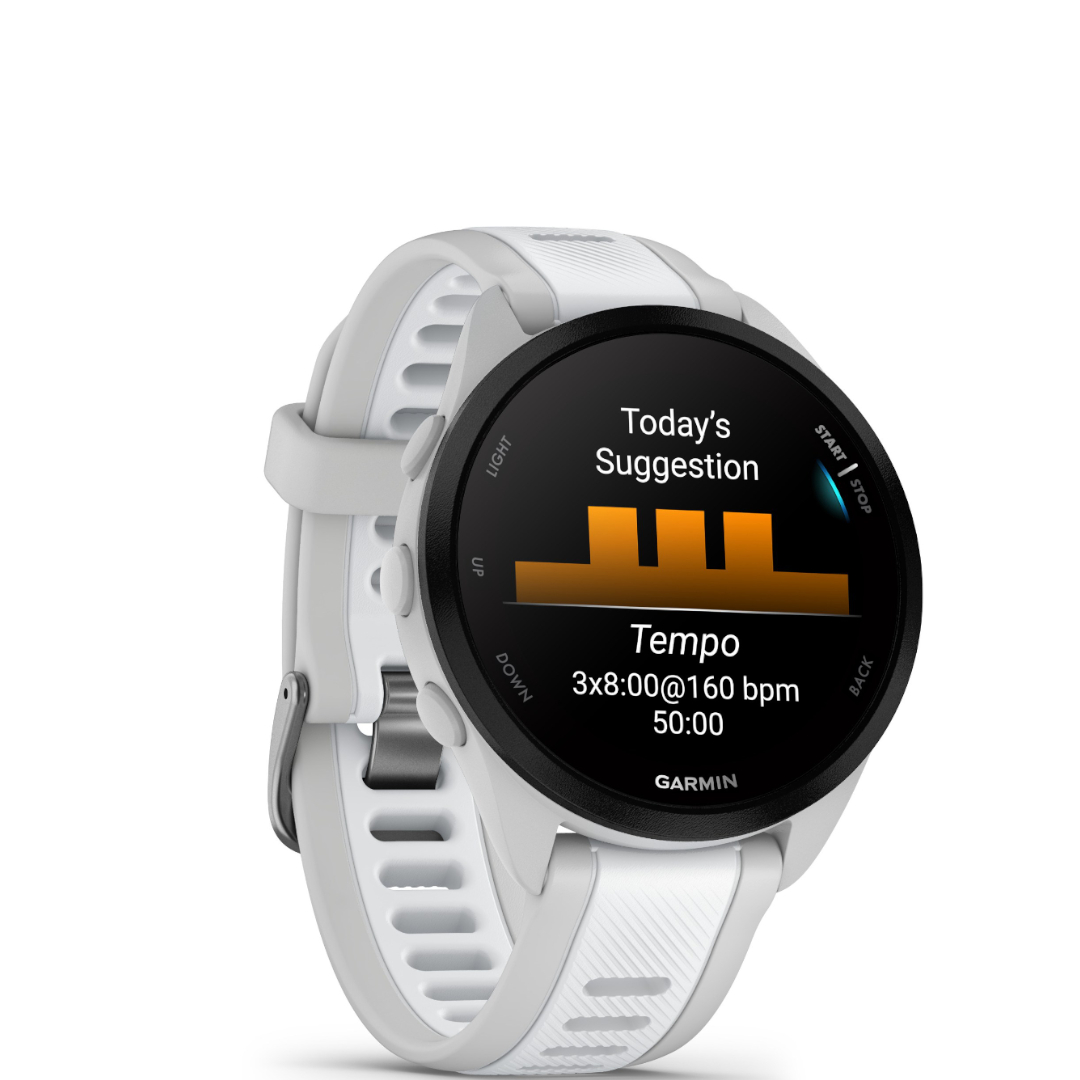
Best affordable
Swooping in at just $50 more than the older Forerunner 55, the Forerunner 165 offers fantastic new features and the perk of an AMOLED display.
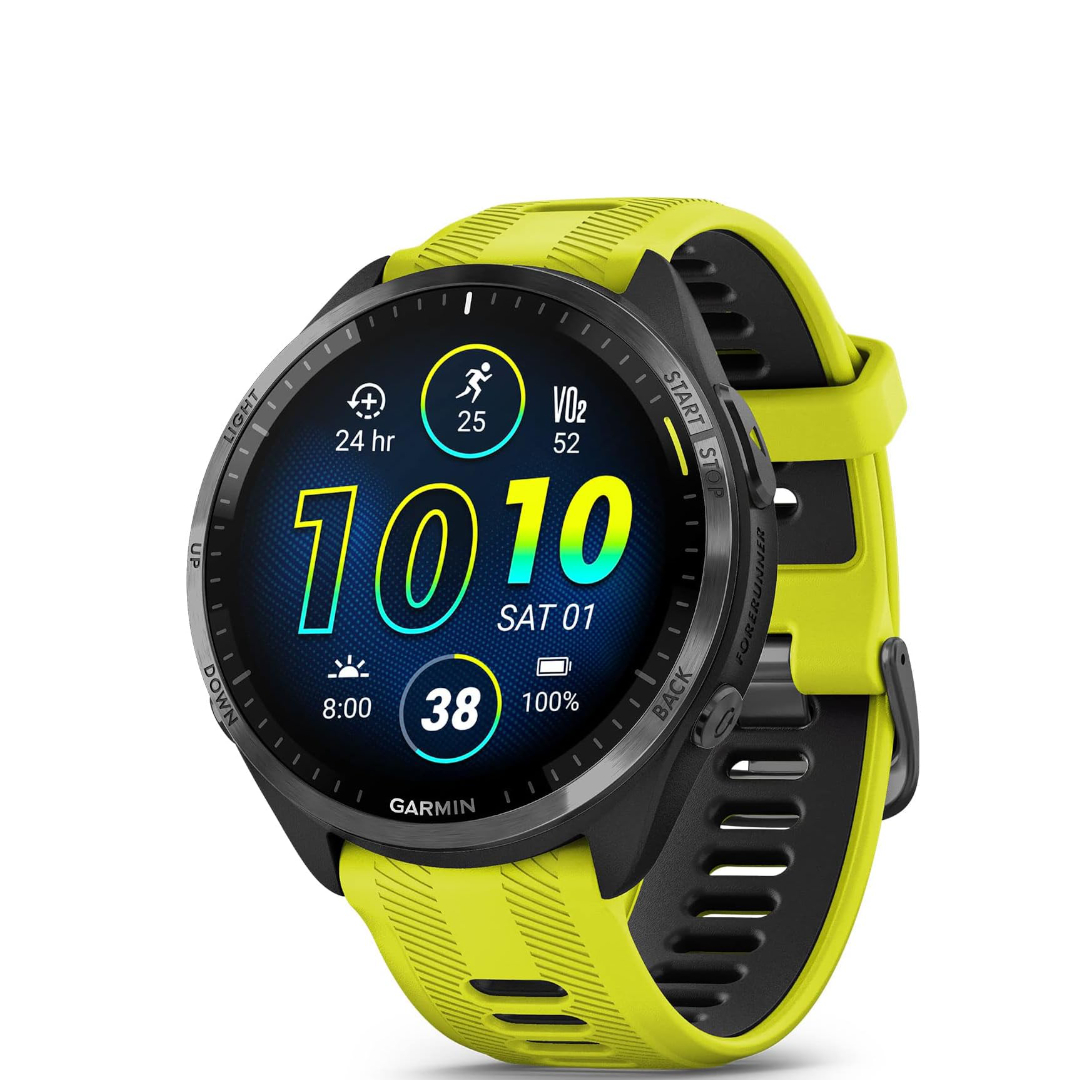
Best premium
Take the Forerunner 265 and add topographical maps, real-time stamina, hill score training, and other upgrades, plus longer battery life and a stylish titanium bezel.
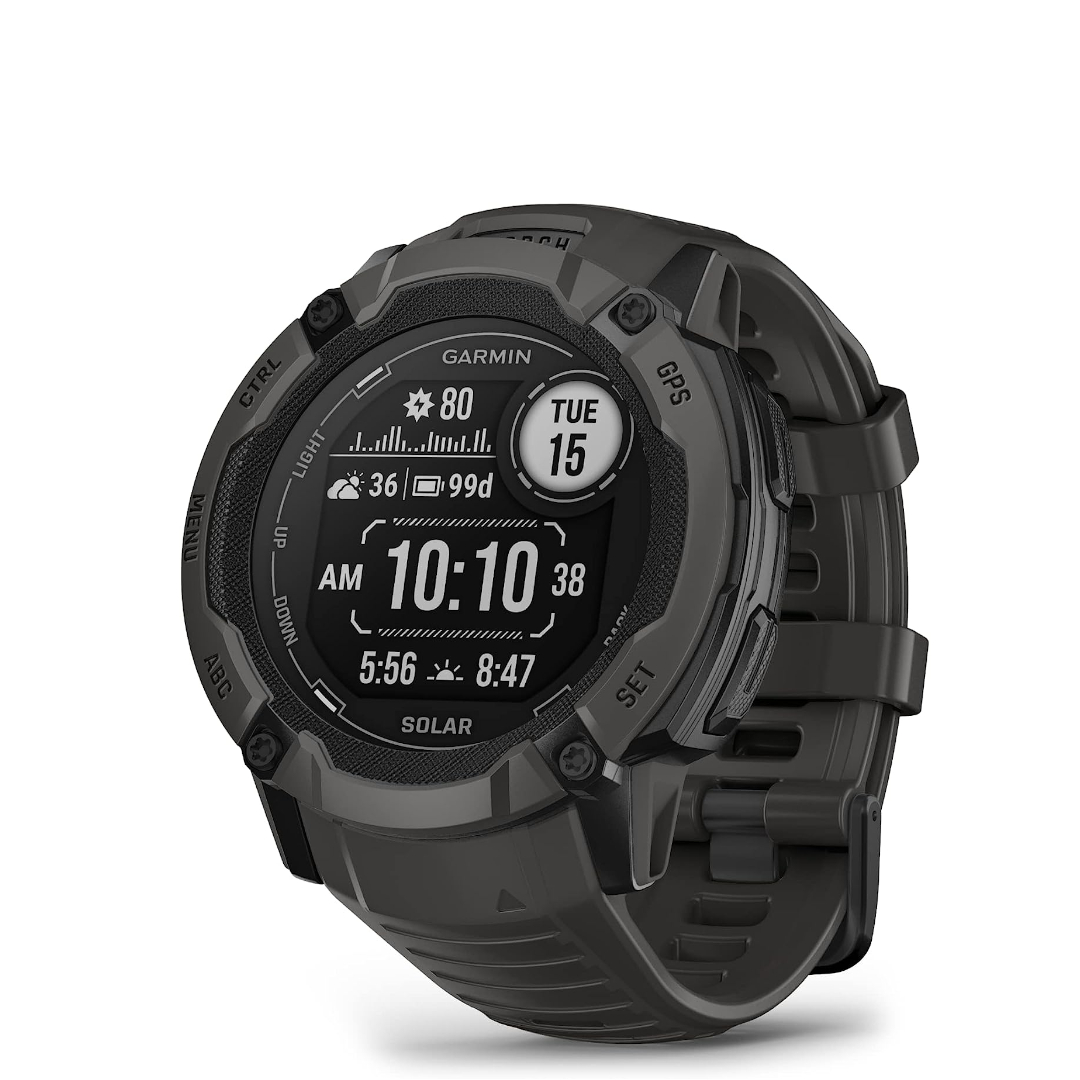
Best battery
Thanks to solar charging, this model can run for weeks upon weeks before you need to recharge it. Plus, it has a built-in flashlight to illuminate your path and an ultra-durable design for the trail.
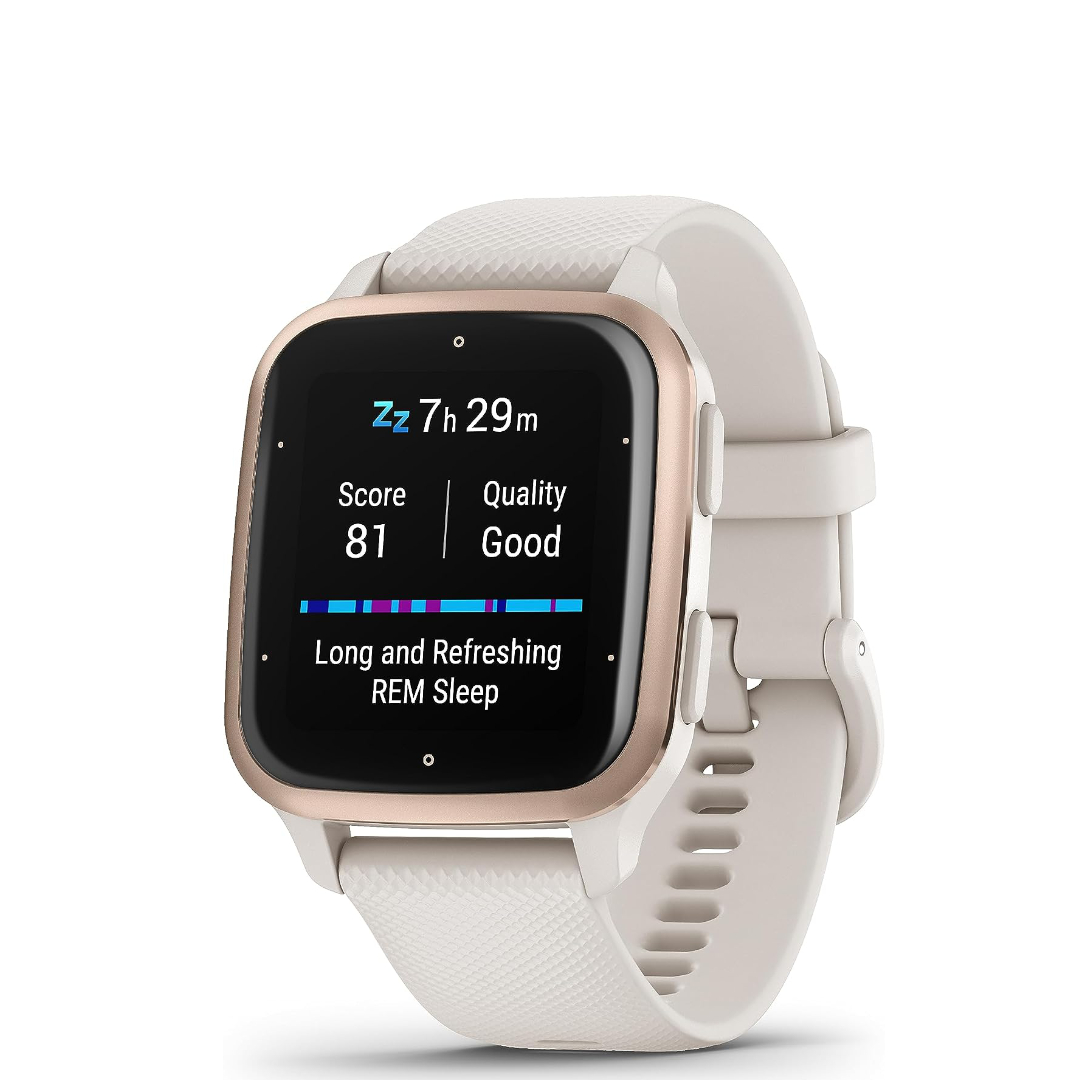
Best mid-range
The Venu Sq 2 has a more mainstream and lightweight design than most Garmin watches, with all the core Garmin software suite, tap-to-pay, music storage, and more for less.
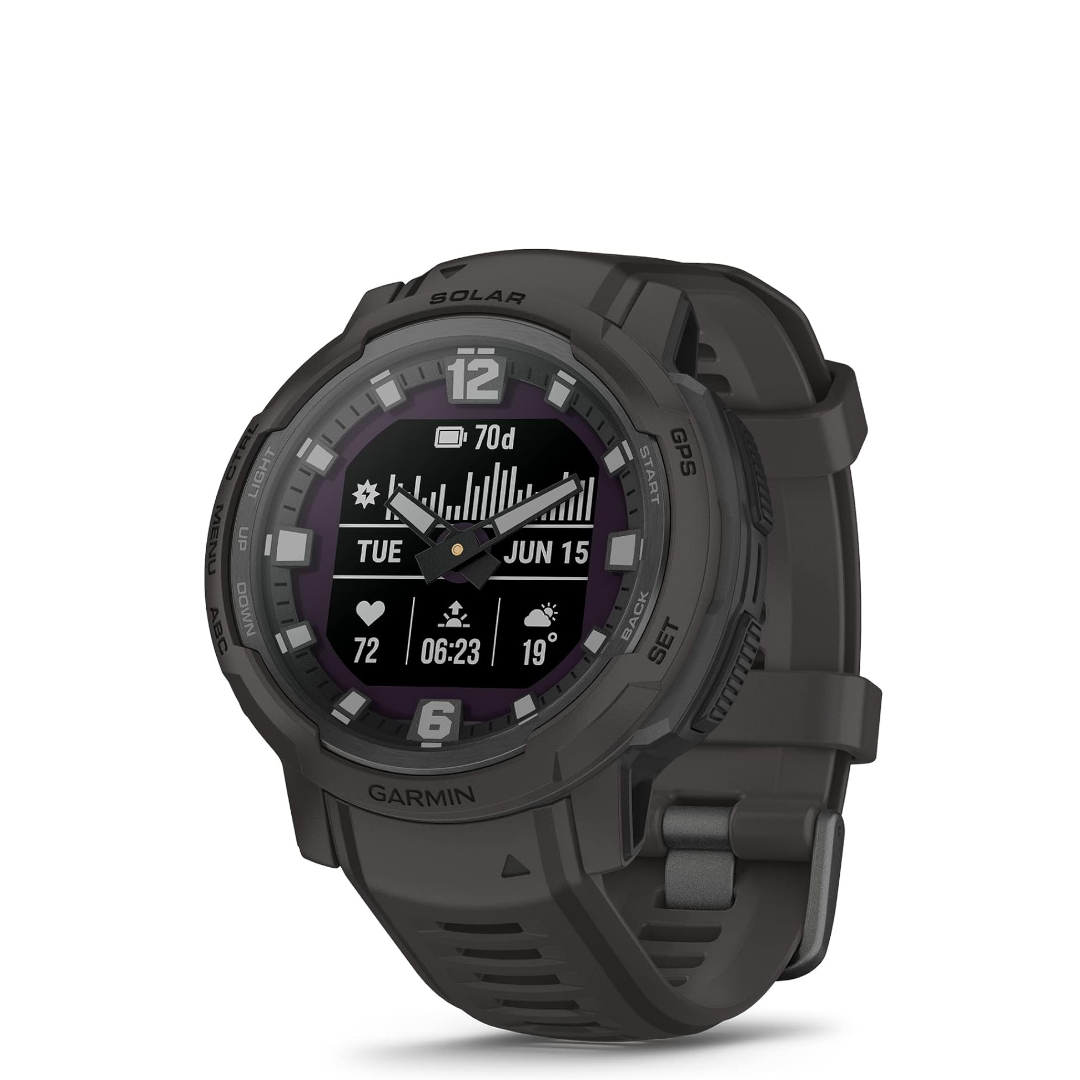
Best hybrid
Get the ruggedness and month-long battery life focus of an Instinct watch, but with a stylish hybrid look, an optional Solar option, and plenty of useful training tools.
Load the next 3 products ↓
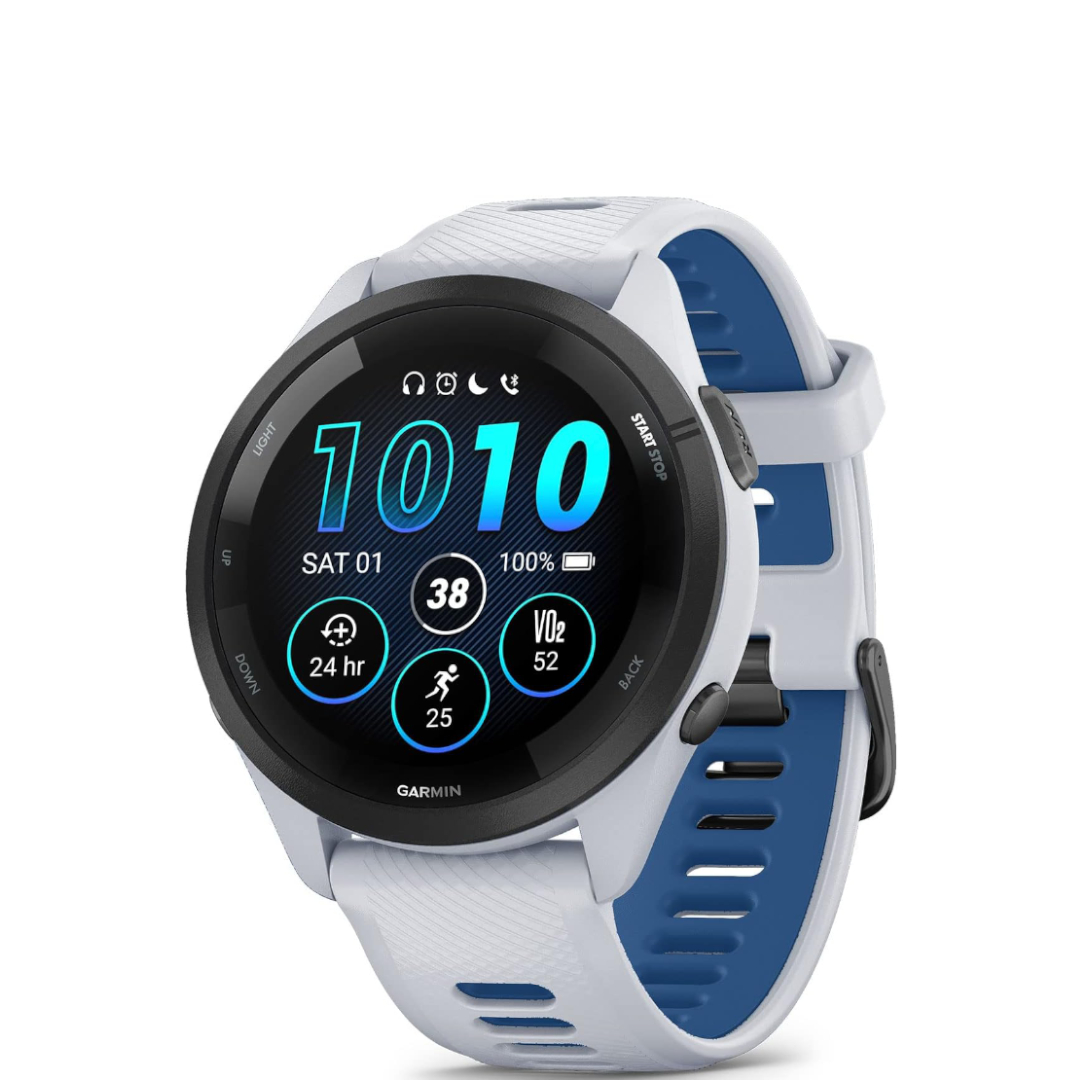
Best for runners
Thanks to its AMOLED upgrade, dual-frequency GPS tracking, long battery life, and training readiness software, the Forerunner 265 is a solid option that fits firmly between the 165 and 965.
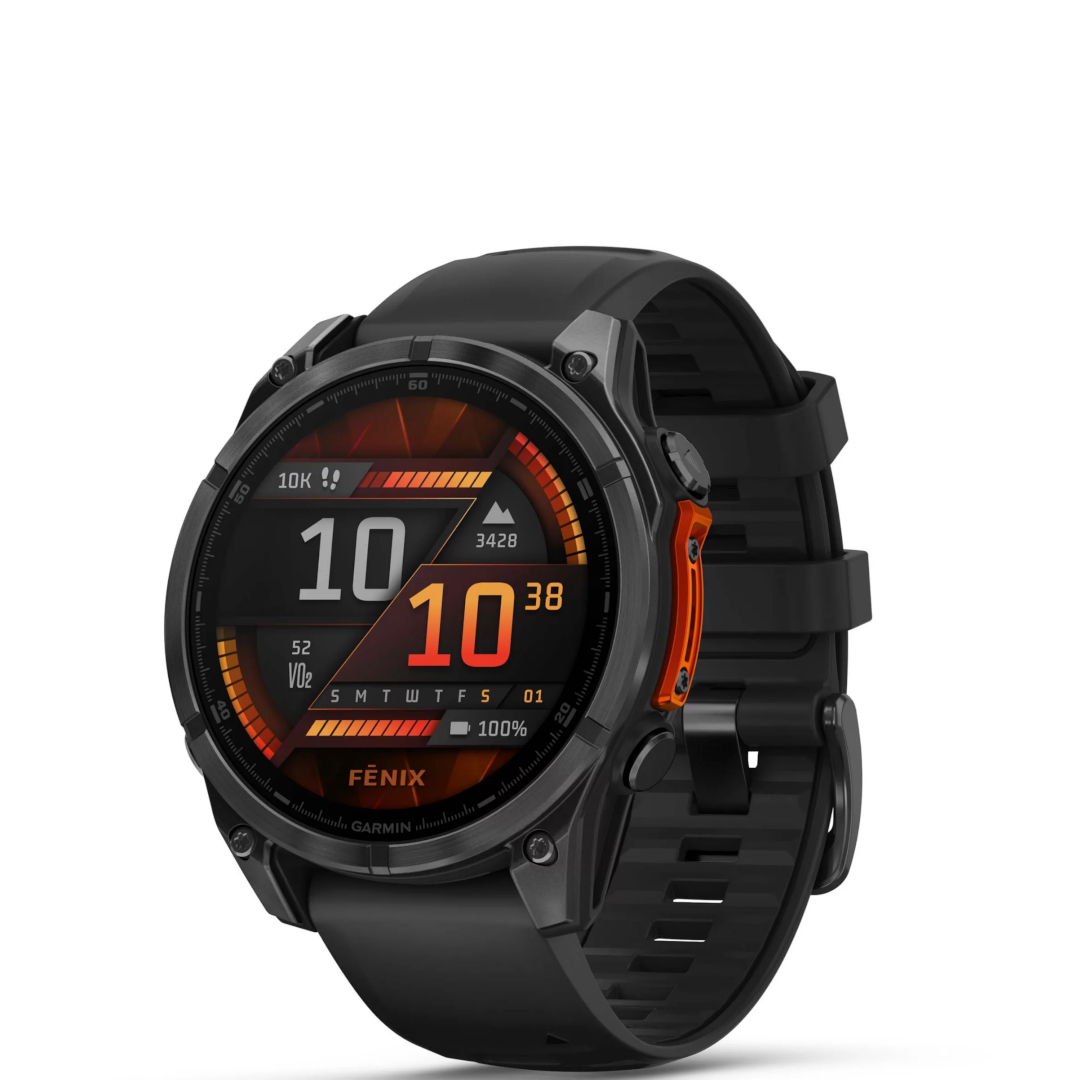
Best for big spenders
If money is no object, the Fenix 8 has features like strength training and dynamic routing, plus an LED flashlight and excellent battery life, paired with an AMOLED display.

Best for kids
Adults aren't the only ones that should establish good fitness habits. The Bounce encourages kids to engage in physical activity while giving parents a way to contact them without needing a cell phone.
Best overall
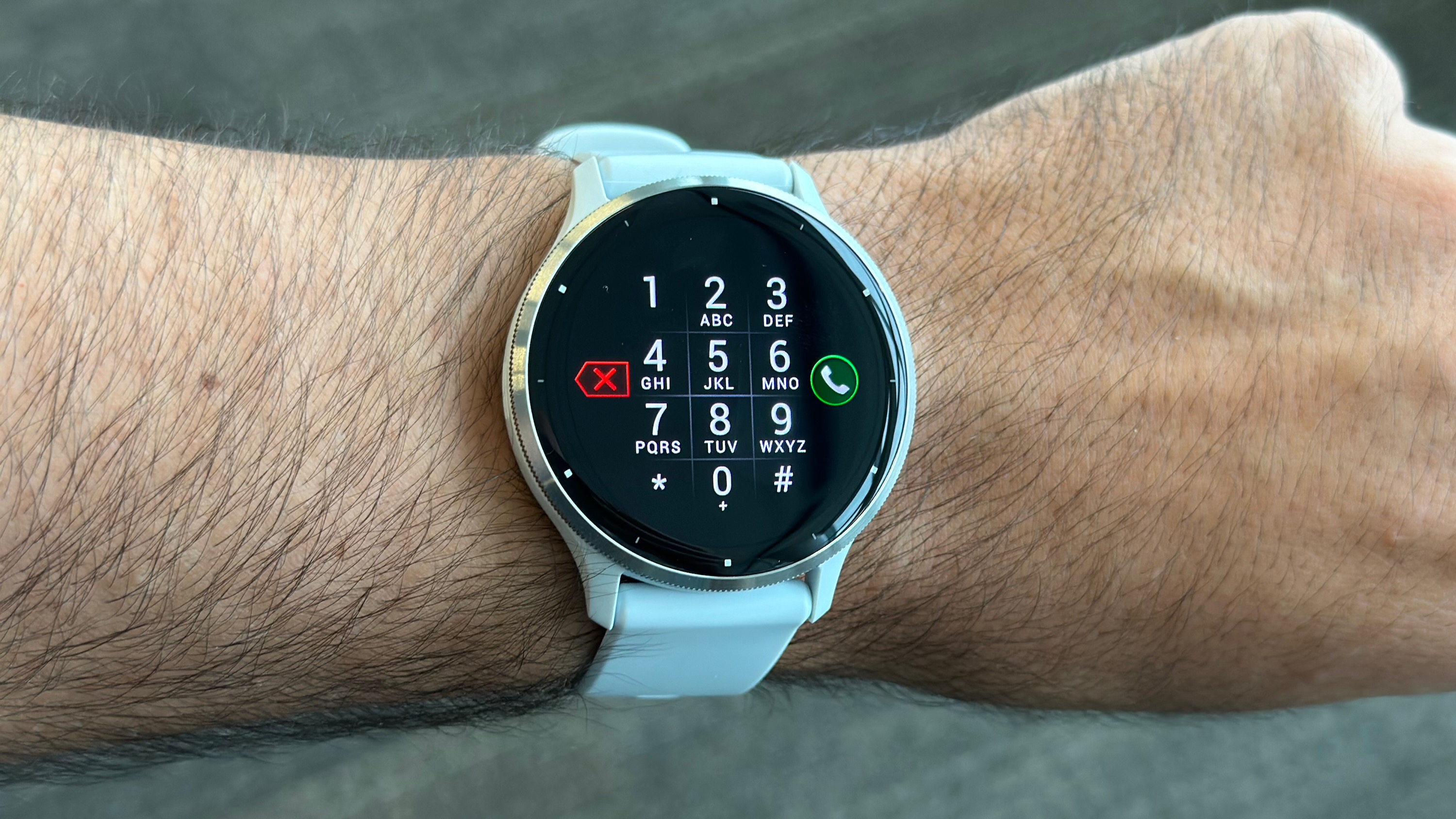
Specifications
Reasons to buy
Reasons to avoid
Garmin watches may never be known for their "smarts" or health insights compared to a Wear OS watch or a Fitbit with Google apps. But the Garmin Venu 3 earns its "best Garmin watch" title by bridging that gap, with a streamlined Garmin OS, new ECG and skin temperature sensors, and the usual training smarts other brands can't offer.
More svelte than your typical Garmin watch thanks to its thinness and stainless steel bezel, the Venu 3 has 1.2- and 1.4-inch AMOLED touchscreen options to fit any wrist size. It has three buttons — one more than the Venu 2 — for navigation and shortcuts like Garmin Pay. Also better than the Venu 2, it has a built-in mic and speaker for passthrough voice commands to your phone or Bluetooth calling.
In my Garmin Venu 3 review, I praised its more accessible UI, the revamped Sleep Coach for better nightly insights, and the enhanced Body Battery graph that shows exactly when you used or regained energy with a workout, nap, or meditation.
For gym goers, it has thousands of animated exercises with muscle maps showing the impact of each move. For runners, it uses multiple GNSSs to pinpoint your location during runs, then suggests how many hours or days to recover before your next run and what kind of "workout effect" it had on your fitness.
While I prefer Garmin Forerunners for their more niche running insights, I can't deny that the Venu 3 gives a better all-around experience for most athletes. It tops our list of the best fitness watches — beating brands like Google, Samsung, Coros, and Apple — for a reason!
Attribute | Quick look | Score |
|---|---|---|
Display | 2 AMOLED sizes, high-res, only GG3 | ★★★★☆ |
Design | Stylish steel bezel, three buttons (shortcuts but no Up/Down), 5ATM, fairly light; includes mic/speaker | ★★★★☆ |
Battery life | 14 days, 26 GPS hours is strong but standard for Garmin | ★★★★☆ |
Health | Accurate HR, HRV, Sleep Coach with skin temp and nap detection, continuous SpO2, ECG | ★★★★★ |
Fitness | Garmin Coach, basic training effect & recovery, animated workouts, but limited running/biking compared to Forerunners | ★★★☆☆ |
GPS accuracy | All-systems GNSS does very well, if not multi-band quality | ★★★★☆ |
Price | Same $449 price as other second-level Garmins | ★★★☆☆ |
Best affordable
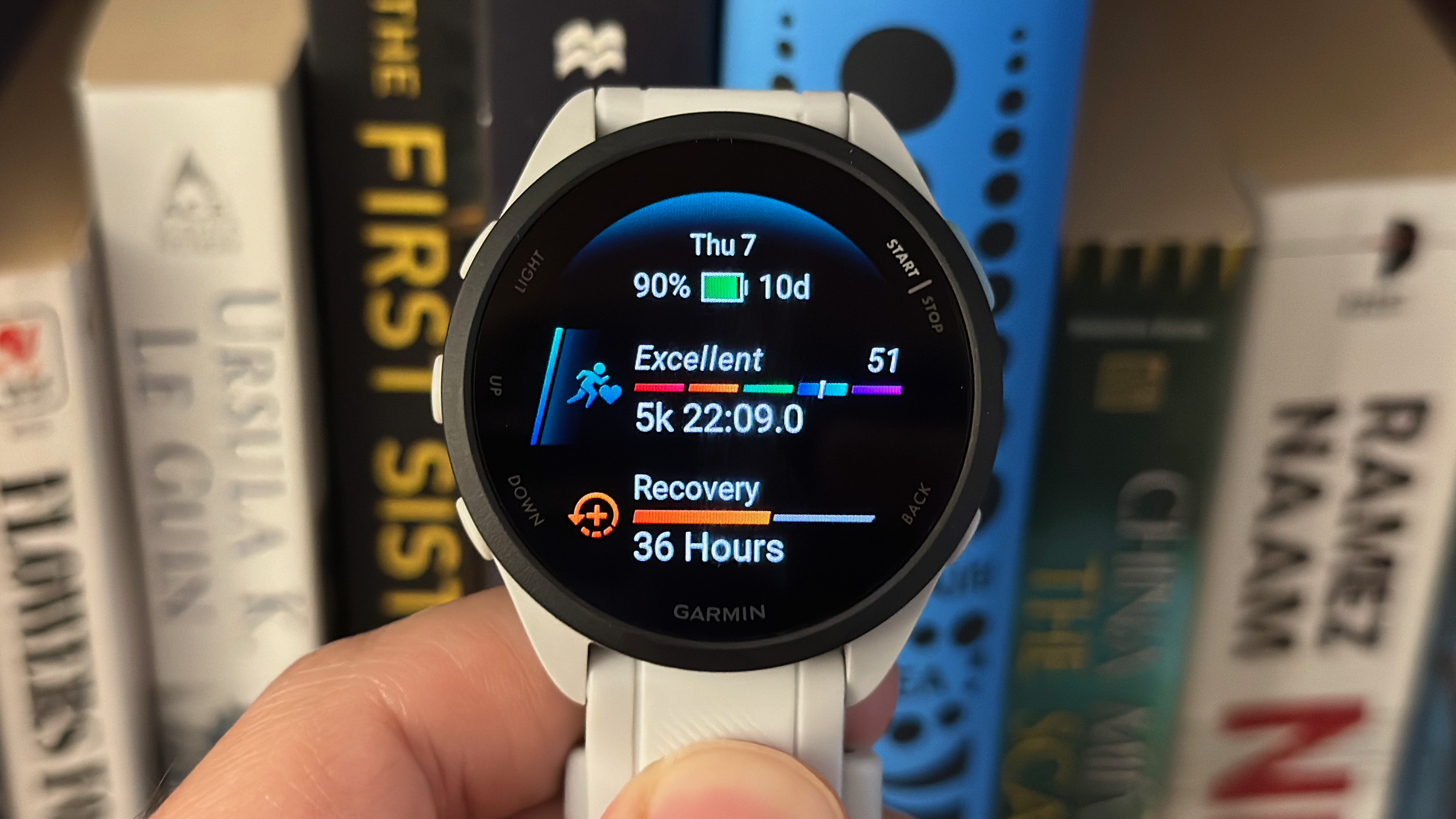
Specifications
Reasons to buy
Reasons to avoid
Picking the best Garmin watch depends largely on your wallet. On the more affordable end of the spectrum is the $249 Forerunner 165 and the Venu Sq 2 (one of our later picks). The $199 Forerunner 55 was our favorite budget Garmin for years, but the 165 has so many upgrades that it's worth paying $50 more.
Compared to the Forerunner 55, the 165 delivers a more accurate HR sensor with HRV data for better Body Battery accuracy, blood oxygen data, all-systems GNSS like the Venu 3's, a compass for breadcrumb navigation, an altimeter for elevation data, and post-run Training Effect data. Plus, of course, you switch from a dim MIP display to an AMOLED touchscreen, while keeping the same thin, lightweight design.
Getting all this, plus Forerunner essentials like Garmin Coach, recovery time estimates, and VO2 Max, is an insane value for this price range. And when we tested its HR and GPS accuracy against other cheap brands, the Forerunner 165 either beat or matched comparable COROS and Fitbit devices.
Now, one of our later picks (the Forerunner 265) is objectively better for serious runners. Garmin stripped away some key tools from the Forerunner 165 like training load, training load focus, training readiness, Performance Condition, multisport activities, and dual-band GPS to make the 265 more compelling. It also costs $200 more!
Having reviewed both watches, I'll point more runners to the 165 first. My Garmin Forerunner 165 review explains that you shouldn't "upsell yourself" to the 265 if you already make do as a runner without those metrics. With the 165, Garmin still tracks your training load and recommends workouts or rest based on that data; you just can't see it. The Forerunner 165 keeps things simpler, and that'll actually be a perk for some runners.
Attribute | Quick look | Score |
|---|---|---|
Display | 1 small AMOLED option w/ decent bezel and "chemically strengthened" glass | ★★☆☆☆ |
Design | Very lightweight and thin, 5 buttons, 5ATM, plastic design | ★★★☆☆ |
Battery life | 11 days, 19 GPS hours is good but lower end for Garmin | ★★☆☆☆ |
Health | Accurate HR, HRV, sleep tracking, and SpO2, but no ECG or skin temp | ★★★☆☆ |
Fitness | Daily suggested workouts, race-adaptive training, training effect, but no training load/readiness | ★★★☆☆ |
GPS accuracy | All-systems GNSS did very well in tests | ★★★★☆ |
Price | $249 price is excellent for Garmin | ★★★★★ |
Best premium
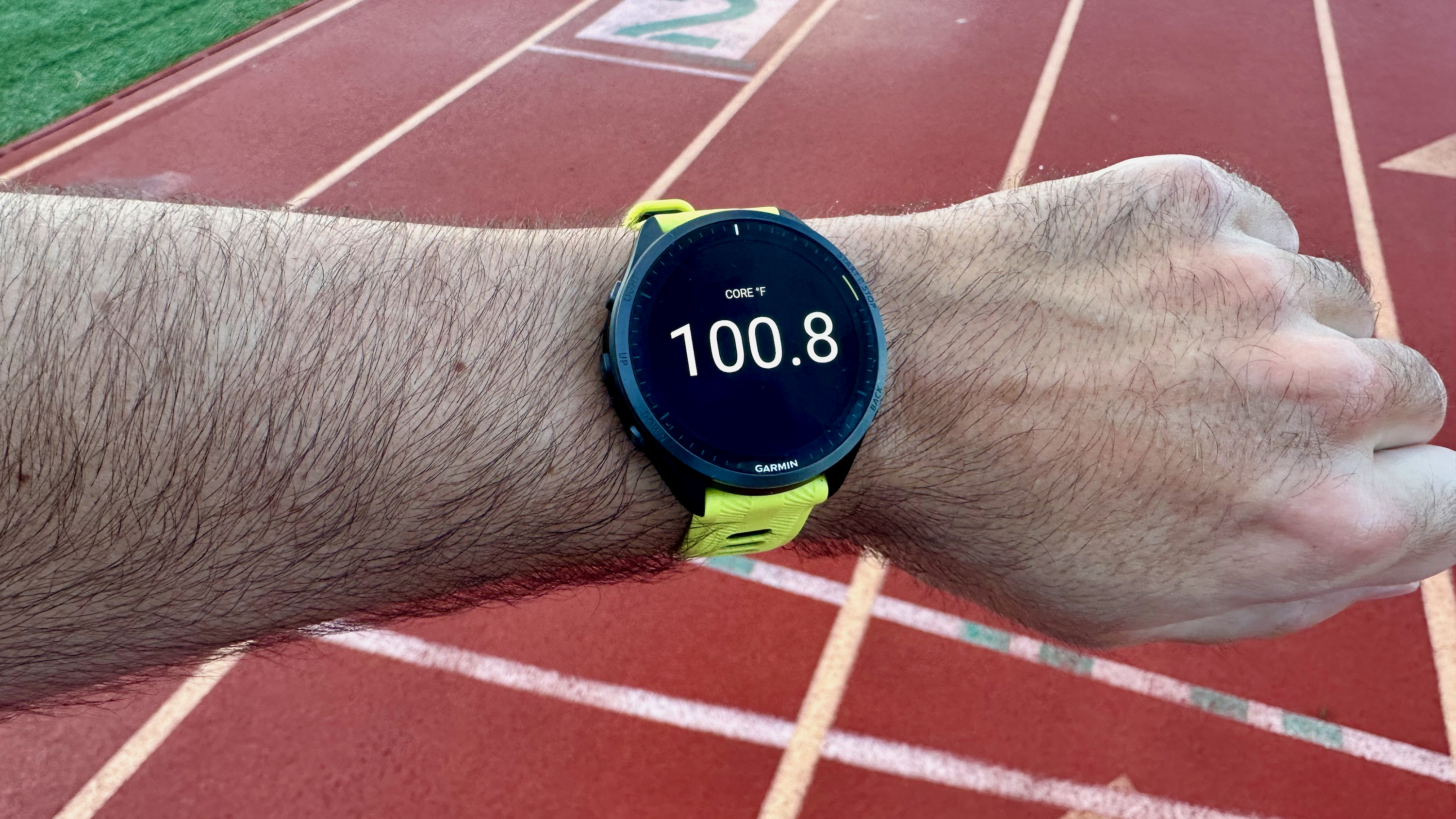
Specifications
Reasons to buy
Reasons to avoid
If spending a lot of money is no object, the Garmin Forerunner 965 is the best Garmin watch Android Central has ever reviewed. I've used it daily for over a year, wearing two watches while testing other brands so that I don't lose track of my training metrics and goals. You'll save $350 buying the Forerunner 165, though, so only choose this if you really need its bells and whistles.
The Garmin Forerunner 965 is essentially a rereleased Forerunner 955 with the same features, only with an AMOLED display instead of a dimmer MIP display. Only the Forerunner 9X5 series supports high-resolution topographical maps, and the visual upgrade makes them more accessible; you can follow downloaded courses, go "Back to Start" if you get lost, or see the next trailhead on your path. You also get Strava Live Segments, a great way to motivate you to hit PRs.
My Garmin Forerunner 965 review had almost nothing but praise for its upgrades over the Forerunner 265. It gives you real-time stamina stats during long runs to warn you when to turn around, advanced cycling dynamics, Endurance and Hill scores for more informed training, and a better anti-reflective display coating that makes it easier to read in direct sunlight.
And compared to the Forerunner 165, you get much more hands-on training guidance from Garmin. Beyond simple training load, it'll tell you whether you need more anaerobic, high aerobic, or low aerobic runs or rides to improve your VO2 Max, which has proven vital for improving as a runner.
Why skip the Forerunner 965? Even though the training software is much more advanced than the Venu 3, the latter gives you a mic and speaker, ECG and skin temperature readings, and a lighter 3S option (there's no 965S). Above it, the Fenix and Epix have even more premium features, mainly relevant for extreme sports or more advanced mapping, plus full titanium or steel bodies.
Attribute | Quick look | Score |
|---|---|---|
Display | 1 large, high-res, thin-border AMOLED with GG3 DX; no small option | ★★★★☆ |
Design | Stylish titanium bezel, five buttons, 5ATM, lighter than Fenixes | ★★★★☆ |
Battery life | Strong overall (23 days) but GPS a little weaker than high-end models | ★★★★☆ |
Health | No ECG or skin temp, but otherwise as accurate as other Elevate v4 watches | ★★★☆☆ |
Fitness | Huge array of training load ratio / stamina data, topo maps, multisport, endurance/ hill scores; only Fenix does better | ★★★★★ |
GPS accuracy | High-end multi-band GPS and SatIQ mode | ★★★★★ |
Price | $600 makes it more affordable than Fenixes but too expensive compared to other Forerunners | ★★☆☆☆ |
Best battery
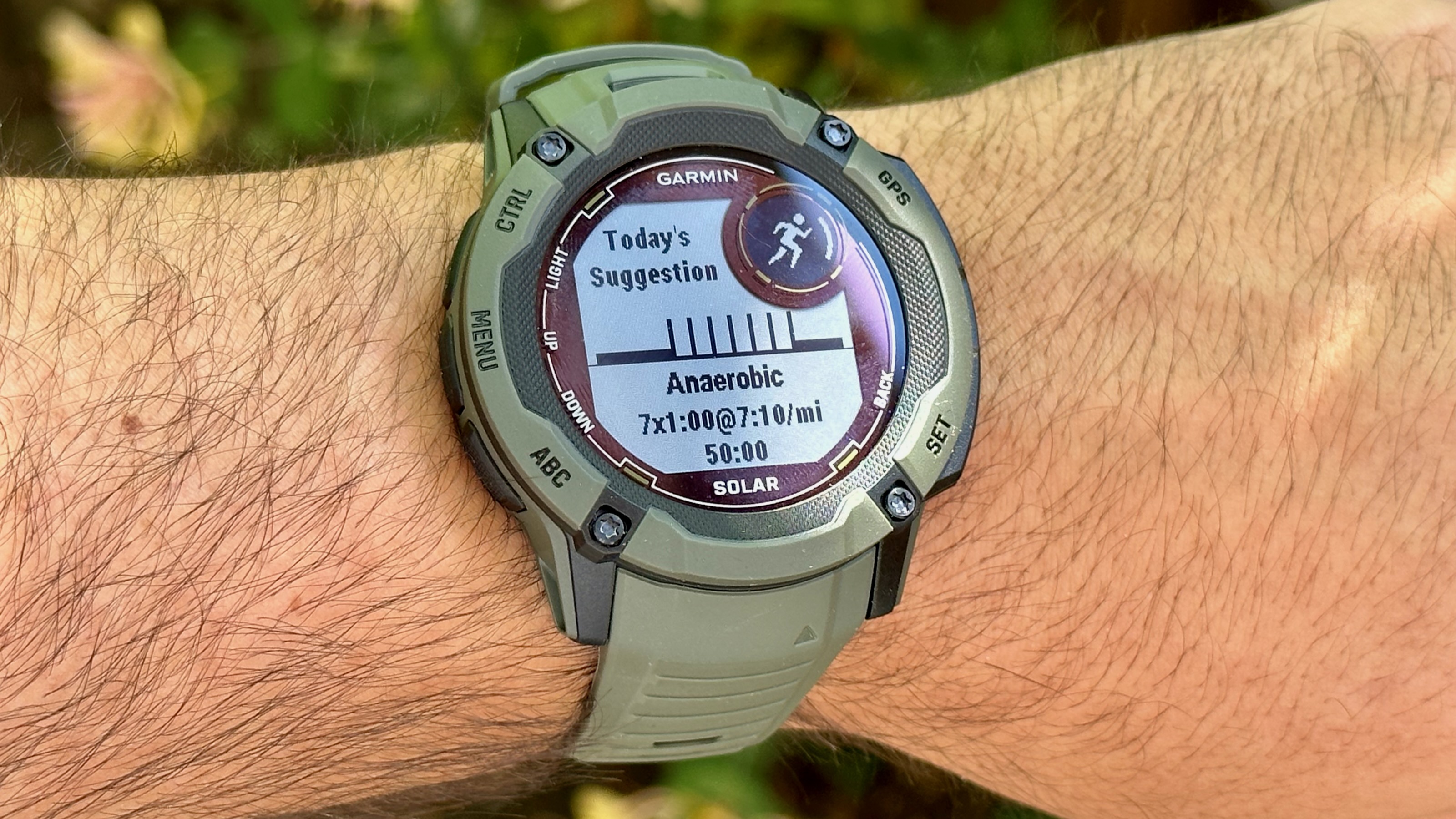
Specifications
Reasons to buy
Reasons to avoid
Most new Garmin watches can last about two weeks, maybe half that after daily tracked workouts, even less when using GPS. Any pick on this list would crush your typical Apple or Android smartwatch for longevity. But if you need a watch that'll last weeks, or even months, between charges, the Garmin Instinct 2X Solar is unmatched.
I'll let the numbers speak for themselves: the Instinct 2X Solar lasts 40 days without solar, or an "unlimited" amount of time if you get a few hours of sun per day. For tracking, it lasts 60 hours for GPS or 27 hours for dual-frequency satellite data; add in solar power, and you jump to 145 GPS hours or 36 multi-band hours. And in Max Battery GPS mode, it can last 150 hours even in a deep, dark cave.
Add in 10ATM water resistance and military-grade protection against shocks and drops, and the Instinct 2X Solar will never fail you during a long trek. Plus, you have a built-in flashlight that can give you a glimpse of your surroundings in dark environments — useful for campers or early-morning runners, at the very least.
Having reviewed both the Instinct 2 Solar and Instinct 2X Solar, I loved them both. The 2X Solar has a much better battery, so it claims this spot; it also gives you dual-band GPS tracking, a gyroscope, and the aforementioned flashlight. But the Instinct 2 Solar still outperforms other Garmin watches for battery life and it weighs significantly less than the 2X, with the same display resolution. If you choose the 2 Solar over the 2X, you shouldn't be disappointed.
Either way, you get core features like Body Battery, blood oxygen, VO2 Max tracking, training readiness and recovery time suggestions, training load and effect, and Garmin Pay. Its bulky look will appeal to G-Shock or Casio fans, and while the display isn't as nice as others on this list, the Instinct 2 series is functional and straightforward.
Attribute | Quick look | Score |
|---|---|---|
Display | 1.1-inch 2-window MIP is larger than 2 Solar's but still not very readable | ★★☆☆☆ |
Design | Military-grade rugged, 5 buttons, 10ATM, will appeal to old-school watch fans but a bit heavy | ★★★★☆ |
Battery life | Can have "unlimited" lifespan if you get enough sunlight, fantastic GPS or Expedition modes | ★★★★★ |
Health | Like other Elevate v4 watches, delivers good HR and stress accuracy but short on ECG/temp, Sleep Coaching | ★★★☆☆ |
Fitness | Similar training load / readiness/ coaching to Forerunners, though missing a few features that require high-refresh display | ★★★★☆ |
GPS accuracy | Excellent multi-band GPS accuracy | ★★★★★ |
Price | Same cost as Venu 3, Forerunner 265 | ★★★☆☆ |
Best mid-range
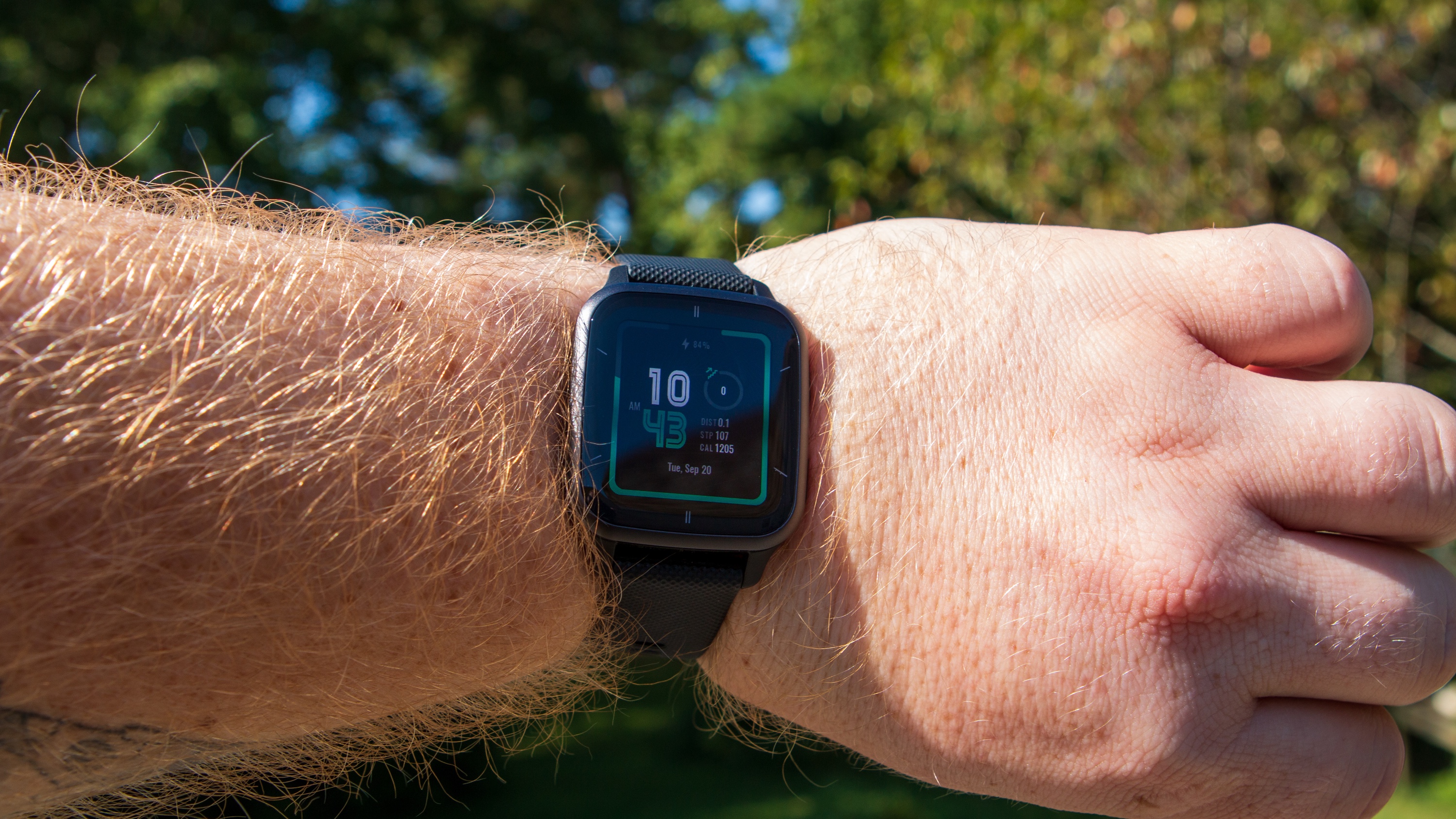
Specifications
Reasons to buy
Reasons to avoid
Those who want a bit of everything Garmin offers without breaking the bank, designed with an Apple Watch-like squircle design, will appreciate the Venu Sq 2. As the name suggests, this is a square version of the Venu 2, with a beautiful 1.4-inch AMOLED display instead of the 1.3-inch LCD on the original Venu Sq.
It doesn't have the mic/speaker combo of the Venu 3, nor some key features on most Venu models: Garmin removed the altimeter for stair tracking and elevation measurement, the gyroscope for a muscle map feature, the exercise guide animations, and live watch faces. You'll also have to pay $50 extra for the Venu Sq 2 Music to get music storage and a wi-fi connection.
Still, it's rare to find a Garmin watch at this price point that isn't compromised in some way, and our Venu Sq 2 reviewer even called it the "Goldilocks smartwatch" because of how it struck the right balance between affordability and packing in enough features. You get the essentials like Body Battery, sleep score, HIIT timers, Garmin Coach, and preloaded workouts to guide you to success.
The Venu Sq 2 Music garnered some controversy when users were unable to download apps like Spotify for over a month. Garmin did fix the issue, so we're not going to dock this pick; we'll simply hope that more issues won't arise down the line.
As an alternative, you may want to look into the Garmin Vivoactive 5, which has a lot of the same upsides and downsides for the same price as the Music Edition, but with a more traditional Garmin look and some of the Venu 3's new software tricks.
Attribute | Quick look | Score |
|---|---|---|
Display | 1.4-inch AMOLED will appeal to squircle fans; GG3, no 2nd size | ★★★☆☆ |
Design | 5ATM, 2 buttons (touchscreen dependent), more generic looking than other Garmins | ★★★☆☆ |
Battery life | 11 days, 26 GPS hours is strong but below-average for Garmin | ★★☆☆☆ |
Health | HR, HRV, basic sleep data with respiration, Body Battery, health snapshot | ★★★☆☆ |
Fitness | Has strong selection of workout modes, but very self-guided (no Garmin Coach, training load) | ★★☆☆☆ |
GPS accuracy | All-systems GNSS does very well, but not multi-band | ★★★★☆ |
Price | $249 (or $299 for music version) makes it an accessible option | ★★★★★ |
Best hybrid
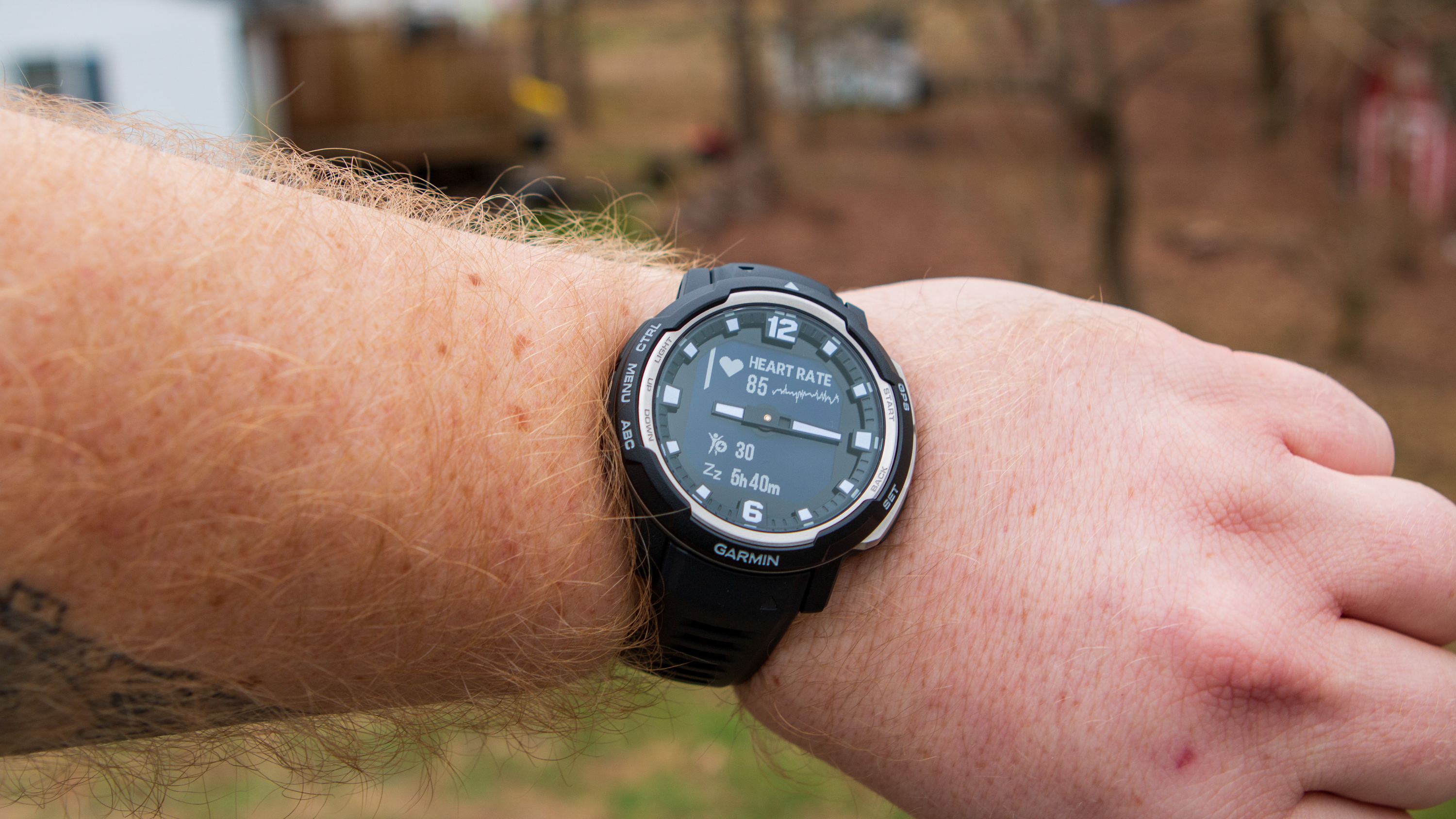
Specifications
Reasons to buy
Reasons to avoid
Garmin has a few hybrid smartwatches, with the Vivomove series designed for fashion-forward athletes who care more about style than smarts. But as much as we like the vívomove Sport and vívomove Trend, they're painfully limited in features and battery to prioritize a sleek look. We think more potential Garmin fans will lean towards the rugged Instinct Crossover instead.
Our Instinct Crossover reviewer, Andrew Myrick, cited his "nostalgia" for his Casio G-Shock that made this rugged hybrid so appealing. It combines polymer and steel in the bezel; that and the analog hands give it a more striking look than the Instinct 2X, even if the Crossover otherwise mirrors it in display size, look, and weight.
The hands auto-shift to the 3 and 9 positions when you get a notification or you navigate menus with the Up/Down buttons, so they're not going to distract you too much. But they do take up space on an already pixel-limited display, so you have to take that into account. The visibility is still much better than on Garmin's other hybrids, where the LCD space is a tiny circular cut-out instead of the full watch face.
Also like the other recent Instincts, the Crossover will last a month on its own merits and more than doubles its longevity if you shell out $50 for the solar-powered version. That's the main appeal here, along with Garmin's typical training insights. You'll rarely have to worry about battery dying, even if you're on a days-long hike broadcasting your location to family through your phone.
Attribute | Quick look | Score |
|---|---|---|
Display | 0.9-inch low-res MIP, hands can block some data, but readable in sunlight | ★★☆☆☆ |
Design | 10ATM with military-grade certification and five buttons; hybrid look is striking, watch itself isn't too heavy | ★★★★★ |
Battery life | Over 2 months with solar, 327 days in Expedition mode, shorter-lived than 2X Solar for GPS life | ★★★★★ |
Health | HR, stress, sleep, and other standards, but no ECG/ skin temp, sleep coaching, relax reminders, etc. | ★★★☆☆ |
Fitness | Includes training load / readiness, workout suggestions, and recovery time | ★★★★☆ |
GPS accuracy | Multi-GNSS included but only one at a time | ★★☆☆☆ |
Price | $399–$449 is on par with most other picks | ★★★☆☆ |
Best for runners
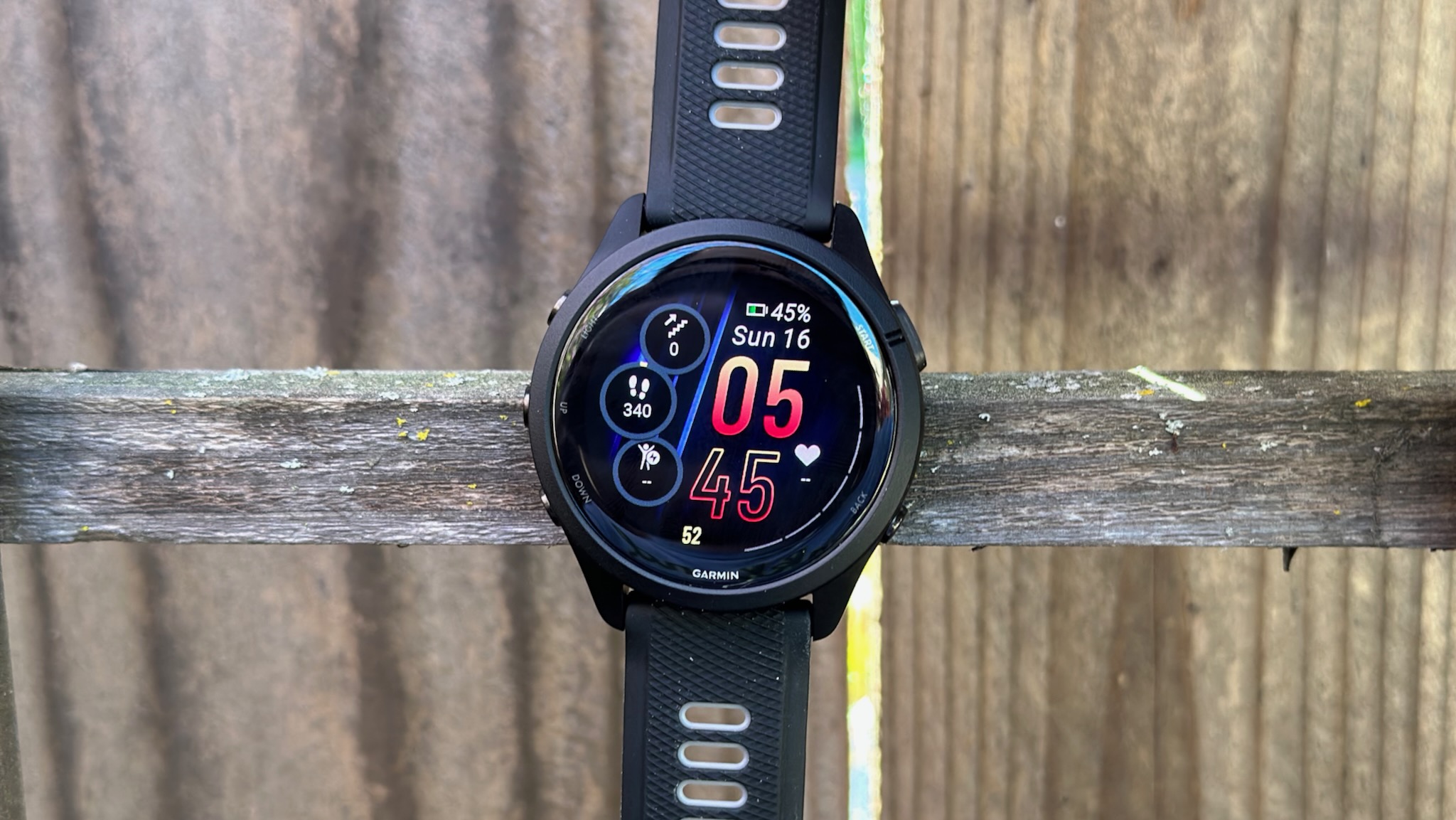
Specifications
Reasons to buy
Reasons to avoid
The Garmin Forerunner 265 topped this guide for a long time, and it still qualifies as the best running watch today because of its affordability next to the 965. Even though I still think it's a great watch, I decided to dethrone it in favor of the Venu 3, now that the Forerunner 165 offers so many of the same perks and makes the 265 feel a bit overpriced.
You get everything from running form analysis and heart rate variability (HRV) stress data to training load focus and dual-band GPS for the same accuracy and guidance as the Forerunner 965 (barring a few exceptions). With pre-run Training Readiness and post-run Training Effect on VO2 Max, you'll learn a lot about your running abilities and fitness level over time.
As my Garmin Forerunner 265 review explains, this watch is essentially a Forerunner 255 Music with a better display and the Training Readiness metric added. If you don't need the AMOLED upgrade, the 255 will still give you dual-band GPS, training load (focus), daily run suggestions, and other perks for $100 less. And for $200 less, the Forerunner 165 is a great running watch too, just with fewer data points in the Connect app.
Attribute | Quick look | Score |
|---|---|---|
Display | 2 AMOLED size options, GG3, thicker border makes them slightly smaller than 965/ Venu 3 | ★★★☆☆ |
Design | Polymer only, 5 buttons, 5ATM, comfortable weight (esp. 265S) but fairly generic looking | ★★★☆☆ |
Battery life | 13–15 days or 20–24 GPS hours (better on 265S) is good but lower than we'd like at this price point | ★★★☆☆ |
Health | Elevate v4 quality for HR data, Sleep Coaching, and SpO2, but no ECG or skin temp | ★★★☆☆ |
Fitness | Most of the 965's training load features, only without real-time stamina, endurance/ hill scores | ★★★★☆ |
GPS accuracy | Multi-band GPS and SatIQ mode combine for high-end accuracy on par with 965 | ★★★★★ |
Price | $449 on par with other high-end Venus and Instincts | ★★★☆☆ |
Best for big spenders
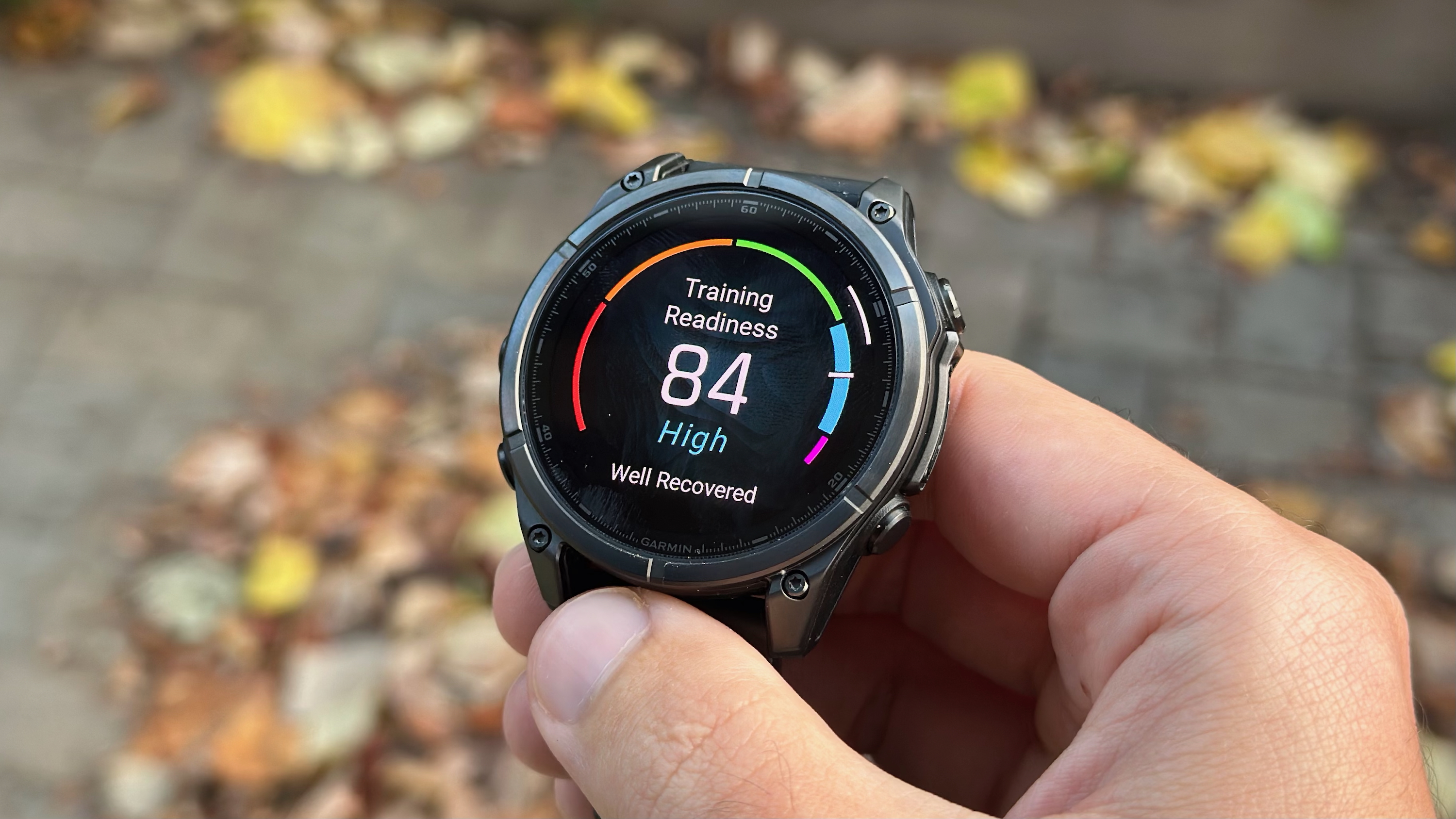
Specifications
Reasons to buy
Reasons to avoid
We tested the Garmin Fenix 8 in late 2024 and found that, beyond the initial bugs I encountered (which Garmin has since fixed), this is a fantastic watch that combines most of the best features of the other picks on this list while adding a few new ones. The main issue is that the Fenix 8 is incredibly expensive in exchange for stylish titanium, long battery life, and cutting-edge features.
Like the Venu 3, it has a built-in microphone and speaker, but it's not restricted to Bluetooth calling and passthrough voice commands. You can also say "Start a Trail Run," "Show my Endurance score," or "Open Settings" and have the relevant app or menu appear. You can even save voice memos if you want to capture your thoughts during a long hike.
Similar to the Instinct 2X Solar, it has MIL-STD-810H ruggedness and 10ATM water resistance, but it also has sapphire glass (on some models) and diving certification down to 40 meters. There's a built-in LED flashlight and (on the MIP models) a solar panel that'll extend your battery life a month or more — except with a full-color display instead of a tiny, low-res one.
And like the Garmin Forerunner 965, it has strong dual-band GPS accuracy and a ridiculous amount of software tools for runners, cyclists, winter and water sports, hiking, and so on. You'll get guidance on everything from ski dynamics to MTB dynamics and surfing. These are pretty niche features, but if you fall into the categories of people who engage in these activities, you'll appreciate having them.
Its mapping tools are even better: you can use Garmin's Outdoor Maps+ subscription for premium maps, Nextfork to see upcoming intersections and landmarks, and Skiview or golf course maps for specific sporting needs.
It even has a few additional cool features, like dynamic round-trip routing and strength coaching. You can go to a National Park, say you want to hike for five hours, and be shown different routes that'll take that amount of time. And the new Strength-focused side of Garmin Coach will focus on you building your strength or muscle mass, from beginners with at-home weights to serious lifters at the gym.
Attribute | Quick look | Score |
|---|---|---|
Display | Three size options, can choose AMOLED or MIP based on priorities, up to sapphire glass protection | ★★★★★ |
Design | Choose the titanium models for best weight; 10ATM resistance and dive certification; striking look across board; has mic/ speaker | ★★★★★ |
Battery life | AMOLED models are stronger than other picks, especially for dual-band GPS, and MIP models rival Instinct solar watches with much better displays | ★★★★★ |
Health | Elevate v5 sensor for slight heart rate accuracy boost, ECG, and skin temp, plus Sleep Coach. Same as Venu 3 | ★★★★★ |
Fitness | Everything the Forerunner 965 offers, plus strength coaching, better map routing, and more niche sporting tools (ski maps, surfing/tides, etc.) | ★★★★★ |
GPS accuracy | Matches other dual-band GPS watches on this list for accuracy | ★★★★★ |
Price | $999–$1,199 prices all Fenix 8 models outside the budget of everyday people | ★☆☆☆☆ |
Best for kids
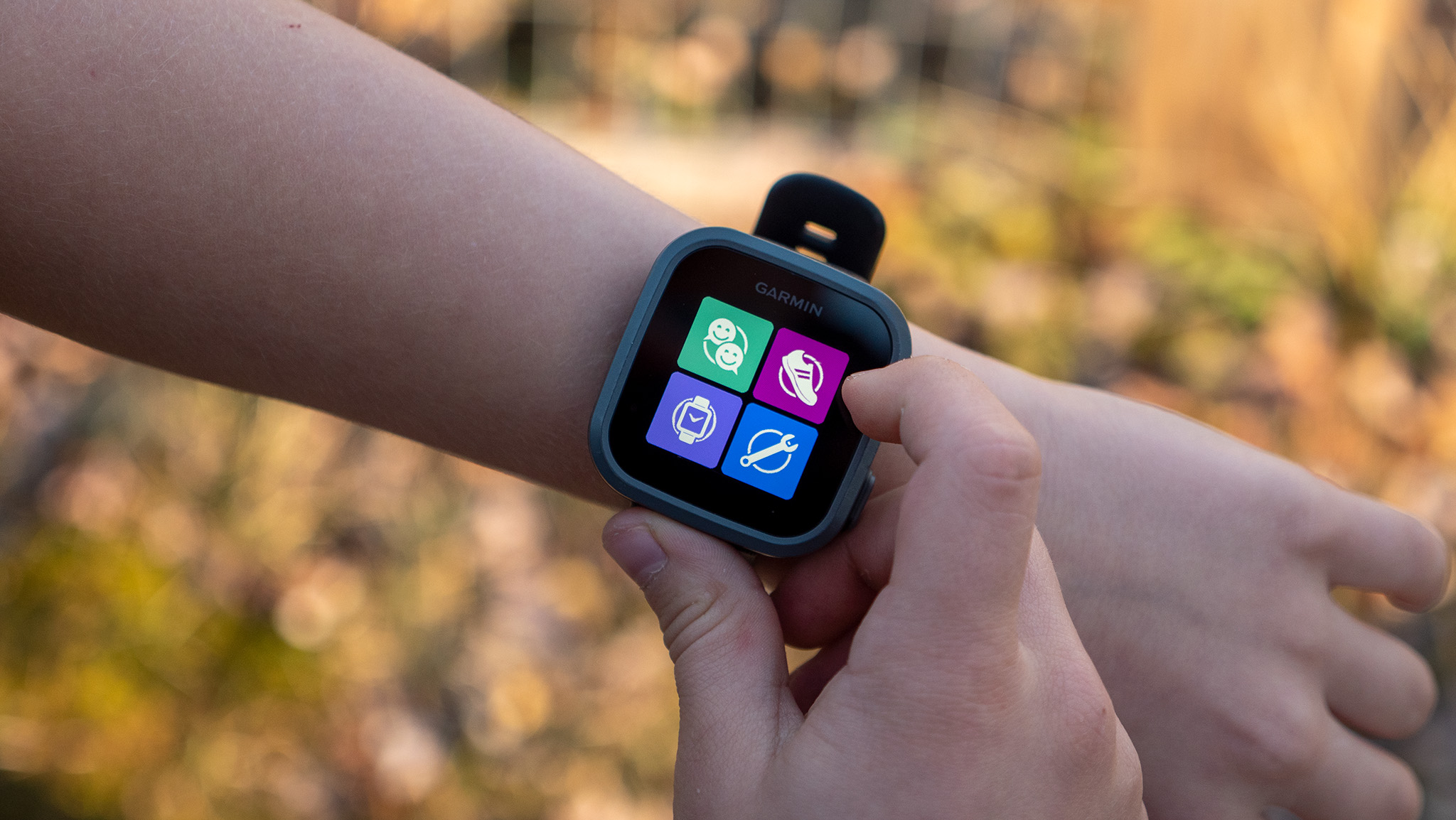
Specifications
Reasons to buy
Reasons to avoid
Garmin watch designs can be too large for many adults' wrists, let alone children's little arms. Most of the features are too advanced anyway or too structured for kids' unstructured playtime. Garmin watches just aren't that fun-looking either. But the Garmin Bounce is the exception to the rule as the best kids' smartwatch geared specifically towards fitness.
For starters, the Garmin Bounce boasts 5ATM water resistance and is even rated by Garmin itself to be swim-friendly. That's a huge deal as most kids' watches simply can't withstand the water pressure from being in a pool for a long time.
The battery lasts for a solid two days and is designed to be worn at night. This gives your child the ability to track their sleep and even set their own alarms if you allow that in the Garmin Jr app.
The watch comes with educational games and daily challenges rewarding them for completing chores or 60 minutes of activity per day. You set up what chores you want them to complete and what rewards they'll receive for doing so. Our reviewer found that his kid enjoyed trying to beat his workout and sleep scores, and found it comfortable to wear while sleeping.
The Garmin Bounce has both Wi-Fi and the option for LTE connectivity, configurable through the Garmin Jr. app. Garmin's LTE service is $10 per month and Garmin manages its own network with an LTE coverage map that you can check before buying.
The app is dead simple to use and doesn't hide features within sub-menus or confusing UI elements. If you're worried that it could be distracting, the school mode ensures kids are not playing games or texting friends when they should be paying attention. It's basically a version of do not disturb mode, ensuring that the watch is a helpful tool and not a distraction.
Attribute | Quick look | Score |
|---|---|---|
Display | 1.2-inch LCD is good size for kids, if a bit low-res | ★★★☆☆ |
Design | 5ATM, very light at 37g and built to withstand active kids, 2 buttons | ★★★★☆ |
Battery life | 2-day battery is good considering LTE support, but slow charging and still a bit short-lived | ★★☆☆☆ |
Health | No HR tracking, does track sleep and has geolocation for safety tracking | N/A |
Fitness | Tracks steps, run/walk/bike activities with GPS, nothing more advanced needed for kids | ★★★★☆ |
GPS accuracy | GPS/ Galileo is only meant for basic tracking, not serious athletes | ★★★☆☆ |
Price | Affordable at $149, though you'll need to pay monthly for cellular support | ★★★★☆ |
How to choose
Which of the best Garmin watches should you buy?
Why you can trust Android Central

It's challenging to crown only one of these wearables as the best Garmin watch. You can choose an Instinct for battery power, Venu for lifestyle tools, Forerunner for in-depth running and cycling tools, or a Fenix for all of the bells and whistles possible.
Since it's our job to recommend just one, we have to go back to the Garmin Venu 3. It'll ease non-Garmin users into a more limited UI than you're accustomed to with a typical smartwatch. But it's not some basic, mainstream device, either; you're still getting vital insights into improving your fitness and avoiding overtraining when your sleep or Body Battery is off.
Otherwise, if you're looking for something more affordable, the Venu Sq 2, Forerunner 165, or Vivoactive 5 are three options that'll save you money and still give you the Garmin essentials you crave.
If you're looking for more specific advice, we'll break things down by category:
Best Garmin watch for battery life
Most Garmin watches last at least one week, with two weeks as a baseline if you don't use GPS tracking too often. If you need something built to last for weeks or months, you'll want to look at models with solar panels, or else choose bulkier models with plenty of battery regardless of the sun in your region.
- Garmin Enduro 3 (w/solar): 90 days, Unlimited (Expedition), 320 hours (GPS), 90 hours (multi-band)
- Garmin Fenix 8 51mm Solar: 48 days, 118 days (Expedition), 149 hours (GPS), 65 hours (multi-band)
- Garmin Instinct 2X Solar: 40 days to "unlimited," 60 days to "unlimited" (Expedition), 145 hours (GPS), 36 hours (multi-band GPS)
- Garmin Enduro 2 (w/ solar): 46 days, 172 days (Expedition), 150 hours (GPS), 81 hours (multi-band GPS)
- Garmin Fenix 7X Pro (w/ solar): 37 days, 139 days (Expedition), 122 hours (GPS), 41 hours (multi-band GPS)
- Garmin Instinct 2 Solar: 28 days to "unlimited," 32 days to "unlimited" (Expedition), 48 hours (GPS)
- Garmin Fenix 8 51mm AMOLED: 29 days, 84 hours, 62 hours (multi-band)
- Garmin Forerunner 965: 23 days, 31 hours (GPS), 19 hours (multi-band)
Best Garmin watch for health tracking
Garmin has upgraded its core Elevate sensor a couple of times in the last few years. The newest Elevate v5 sensor added ECG and skin temperature tracking, while the Elevate v4 sensor gave us more accurate heart rate data and HRV information for stress and recovery. Generally speaking, you'll want to buy newer Garmin models with either the v4 or v5 sensor.
The Garmin Venu 3 is the most affordable watch today with the v5 sensor and the latest health tricks and sleep coaching; the Venu 2 Plus has the ECG app, but not skin temperature. Otherwise, the D2 Mach 1 Pro, Enduro 3, Epix Pro (Gen 2), Fenix 7 Pro (and 7X/7S Pro), Fenix 8, Quatix 7 Pro, and Tactix 7 AMOLED have all of the latest sensors.
Most Garmin watches sold since 2022 have the Elevate v4 sensor, which we've found delivers consistently reliable heart rate data across various Forerunner, Venu, and Instinct models. You'll just have to accept that you won't have access to ECG and skin temperature data until your next Garmin watch.
Best Garmin watch for tracking accuracy
You have three main levels of GPS accuracy on Garmin watches: GPS only, All-Systems GNSS, and multi-band GPS w/ All-Systems. Although all-systems mode is generally accurate on its own merits, multi-band mode is the best for tracking you in difficult conditions like heavy foliage, tall buildings, or nearby mountains that can block satellite signals.
You can check the full list of multi-band Garmin watches, bike computers, handhelds, and so on. Generally speaking, all of the recent Garmin Forerunners above the 255 have multi-band tracking, plus the Instinct 2X Solar, Fenix 7 / 8, Epix Gen 2 series, and other high-end models like Tactix. Newer mainline or budget models like the Venu 3, Vivoactive 5, or Forerunner 165 stop at All-Systems mode.
How we test
☑️ 15 years of product testing, including the first smartwatches and fitness bands
☑️ We test HR, GPS, battery life, steps, training plans, and more
☑️ Reviews for every major Garmin watch, as well as competing brands like COROS, Polar, Fitbit, Suunto, Samsung, and Apple
Android Central has reviewed fitness watches and bands since they first became popular, from the Samsung Galaxy Gear in 2013 to the first Fitbit Charge in 2014 and the Pebble Time in 2015. While fitness isn't our site's only focus and we were relatively late to the Garmin party, we've reviewed 26 Garmins in the last five years, starting with the Forerunner 745 in 2020.
As the one who reviewed the majority of those watches, as well as competing brands' fitness watches, I have become well-versed in Garmin's feature set and UI, and I know what features will be new and exciting to you and focus on testing those in reviews, so you know what to expect.
Across each Garmin watch, I test their heart rate accuracy against an optical arm monitor to see whether it can be trusted for accuracy (here's why I don't use a chest strap, for context), and check its GPS map against my actual route in track lanes or along trails in tree-lined parks to see how they match up. I even use a physical pedometer to track step accuracy!
I also wear each Garmin watch day and night, using them regularly for workouts, notifications, and so on to make sure I catch any random glitches and see how well they do for battery life.
Be an expert in 5 minutes
Get the latest news from Android Central, your trusted companion in the world of Android

Michael is Android Central's resident expert on wearables and fitness. Before joining Android Central, he freelanced for years at Techradar, Wareable, Windows Central, and Digital Trends. Channeling his love of running, he established himself as an expert on fitness watches, testing and reviewing models from Garmin, Fitbit, Samsung, Apple, COROS, Polar, Amazfit, Suunto, and more.
- Christine PersaudContributor
- Courtney Lynch
